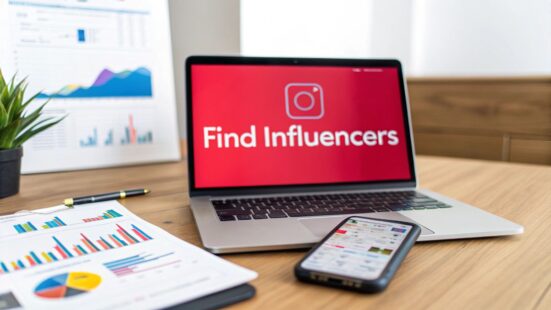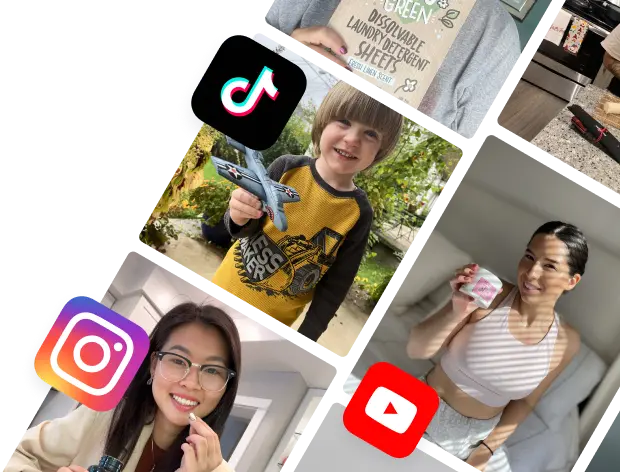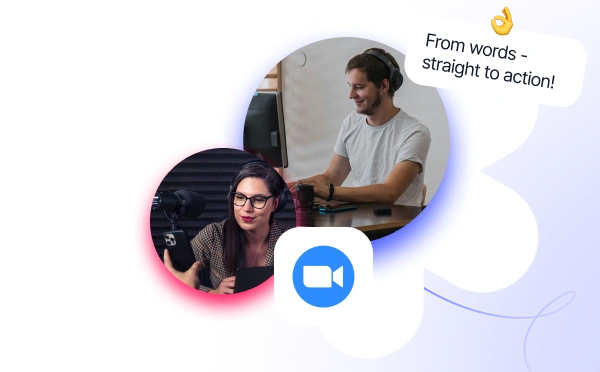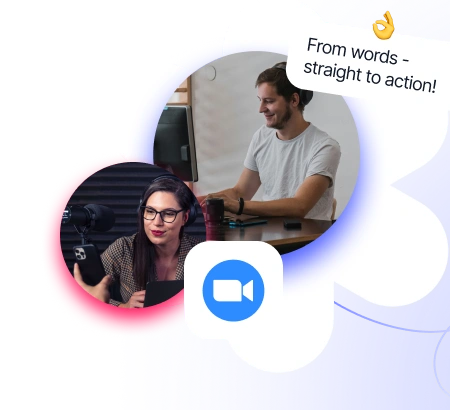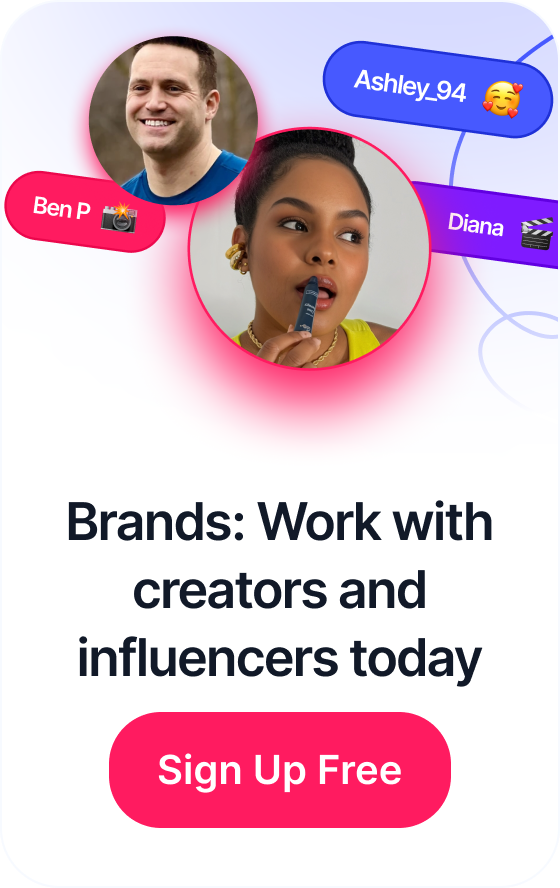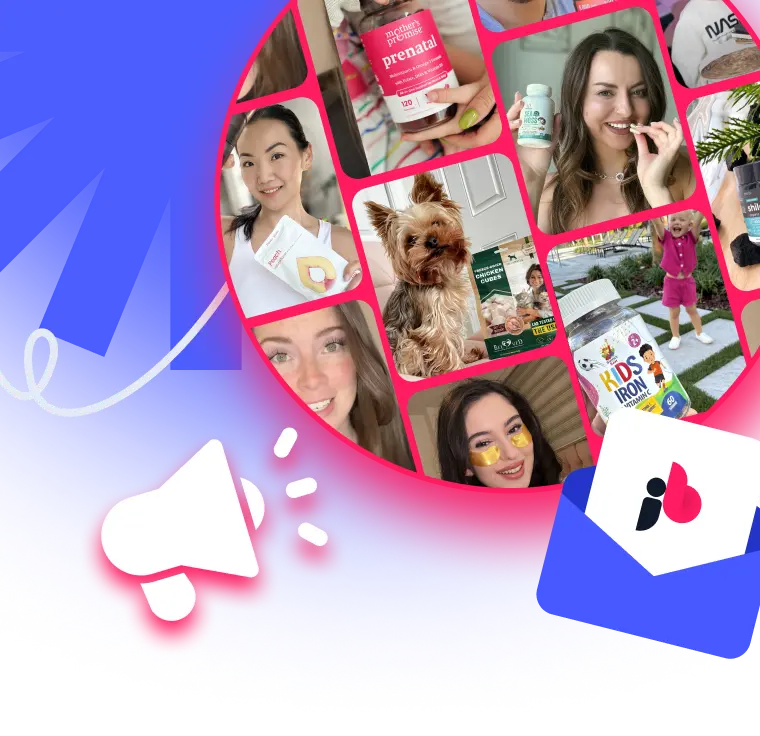 Boost Your Influencer Marketing ROI Today
Boost Your Influencer Marketing ROI Today
Finding the right partners for your brand is a two-part dance: strategy before search. It's tempting to dive straight into scrolling, but the real wins come from mapping out your campaign goals and getting inside your target audience's head first. Only then should you start hunting for creators.
Table of Contents
Build Your Influencer Strategy Before You Search

Before you open a single social media app, pause. I've seen countless brands burn through time and money by jumping into the search process without a solid plan. It’s like trying to navigate a new city without Google Maps—you might find somewhere, but it's probably not where you wanted to go.
The first move is always to look inward at your own business. This upfront planning is non-negotiable. It’s what separates a purposeful partnership from a random shot in the dark.
Define Your Campaign Goals
Let's get specific. What does a "win" actually look like for this campaign? Vague goals like "get more exposure" are useless. You need to set concrete, measurable targets that will act as your north star throughout the entire search.
The goal you set directly shapes the type of influencer you need:
- Brand Awareness: If you just want to get your name out there, your focus is on reach and impressions. You'll want creators with large, engaged followings who can introduce your brand to a sea of new faces.
- Lead Generation: Here, the goal is to drive traffic. You need influencers who are masters at crafting compelling calls-to-action that get people clicking over to your website or a specific landing page.
- Direct Sales: This is the bottom line. You need partners with a proven knack for turning their followers into paying customers. Think creators who are amazing at product demos and have built a foundation of trust with their audience.
A well-defined goal is the compass for your entire influencer marketing effort. It dictates the platforms you use, the creators you partner with, and the metrics you track for ROI.
Understand Your Target Audience Deeply
Once your goals are locked in, it's time to think about the people you're trying to reach. Who is your ideal customer, really? Where do they hang out online, and—most importantly—who do they genuinely trust for recommendations?
Answering these questions ensures your message actually lands. It's not just about finding an influencer; it's about finding an influencer whose audience is your audience.
Crafting a winning influencer seeding strategy from the start is a massive part of this. Getting your products into the hands of the right creators is the secret sauce. This strategic alignment is what separates a truly impactful campaign from one that just disappears into the digital noise.
And in an industry valued at $24 billion in 2024, just guessing is a luxury no brand can afford.
Choose the Right Platforms and Creator Tiers
Not all social platforms are created equal, and your ideal influencer probably isn't active on every single one. Finding the right creators starts by meeting them—and your audience—where they already are. A B2B software company isn't going to get much traction on TikTok, just like a trendy Gen Z fashion brand would probably fall flat on LinkedIn. You get the idea.
Think of each platform as a different kind of party. Instagram is like a sleek art gallery, a visual portfolio perfect for fashion, beauty, and travel brands telling stories through polished images and Reels. TikTok, on the other hand, is a chaotic, high-energy block party—a hub for fast-paced trends, raw entertainment, and authentic, unpolished content. Your choice should directly mirror your campaign goals and, most importantly, where your target customers are scrolling.
Decoding the Influencer Tiers
Once you’ve zeroed in on the right platform, you need to think about the different types of creators. Influencer marketing isn't just a numbers game of chasing massive follower counts; it’s about finding the right blend of reach, engagement, and genuine connection.
Each tier of influencer brings something different to the table:
- Nano-Influencers (1k-10k followers): These are the grassroots creators with small but mighty communities. Their followers are incredibly engaged and trust their recommendations almost implicitly, which makes them perfect for hyper-niche products.
- Micro-Influencers (10k-100k followers): This is often considered the sweet spot. They strike a great balance between respectable reach and strong community trust. They feel relatable, and their engagement rates tend to be much higher than those of larger creators.
- Macro-Influencers (100k-1M followers): These are your established creators, bloggers, and minor celebrities. They offer serious reach and are fantastic for broad awareness campaigns, though you'll often see their engagement rates start to dip.
- Mega-Influencers (1M+ followers): Think A-list celebrities and viral superstars. They provide massive, broadcast-level exposure but come with the highest price tag and the least personal connection to their audience.
The following graph shows how a brand’s marketing budget might be split across these different tiers. Notice the heavy investment in the powerful micro and macro segments.
This visual really drives home the point: brands are betting big on mid-tier influencers who blend substantial reach with credible, authentic engagement.
Why Smaller Is Often Smarter
It might feel counterintuitive, but focusing on smaller creators is often the smartest move you can make. While Instagram is still a dominant force, used by 93% of marketers, the real trend is in the strategy. A solid 42% of brands are now actively partnering with nano and micro-influencers.
Why? The reason is simple: engagement.
Micro-influencers can deliver much higher engagement rates—averaging around 3.86%—because their connection with their audience feels more like a real friendship. It’s personal and it’s trustworthy. To dig deeper into this, you should check out our guide on how to find micro-influencers for your brand.
The real magic often happens in the 5,000 to 20,000 follower range. It’s the sweet spot for balancing meaningful reach with the authentic connection that actually drives people to act. This is especially true when you consider that 61% of consumers trust recommendations from influencers more than traditional brand ads.
To help you decide which tier is right for your goals, let's break down the key differences in a simple table.
Influencer Tier Comparison Reach vs Engagement
This table highlights the trade-offs between different influencer tiers, comparing audience size with typical engagement rates to help you find the perfect fit for your campaign.
| Influencer Tier | Follower Range | Typical Engagement Rate | Best For |
|---|---|---|---|
| Nano | 1,000 – 10,000 | 5% – 10% | Hyper-targeted niche marketing, building strong community trust. |
| Micro | 10,000 – 100,000 | 2.5% – 5% | High-engagement campaigns, driving conversions with a trusted voice. |
| Macro | 100,000 – 1 Million | 1% – 2.5% | Large-scale brand awareness, reaching a broad audience quickly. |
| Mega | 1 Million+ | < 1% | Maximum exposure, celebrity endorsements, top-of-funnel awareness. |
Ultimately, the best choice depends entirely on what you're trying to achieve. If you're launching a new niche product, a handful of passionate nano-influencers could be far more effective than one mega-influencer. But if you're a household name aiming for mass visibility, a macro or mega-influencer campaign might be exactly what you need.
Master Influencer Discovery Tools and Techniques
Endlessly scrolling through social media feeds, hoping you'll stumble upon the perfect partner isn’t a strategy—it's a recipe for burnout. If you really want to find the right influencers for your brand, you have to move beyond aimless manual searches and start using the right tools. This approach not only saves a ton of time but also delivers far better, more measurable results.
The most direct path is to use a dedicated influencer marketing platform. These are essentially purpose-built search engines for creators, letting you filter by niche, audience demographics, engagement rates, and even their past brand deals. They turn a chaotic, needle-in-a-haystack search into a structured, data-driven process.
Diving Into Influencer Discovery Platforms
Dedicated platforms are becoming non-negotiable, especially with the influencer marketing market value expected to hit nearly $33 billion in 2025. Many of these tools now use AI, and 73% of marketers say this automation makes their campaigns much more accurate. And since 77% of brands are juggling partnerships with up to 10 influencers at once, these platforms are vital for managing discovery at scale. For a deeper look at the trends, you can explore the state of influencer marketing in 2025 to see how technology is shaping the industry.
These platforms provide deep analytics that you just can’t get from looking at a public profile. If you're trying to figure out which tool is right for you, checking out a guide on the top influencer marketing platforms can give you a much clearer picture of what's out there.
For instance, this screenshot from HypeAuditor shows just how granular you can get, filtering searches by category, location, and audience size to instantly narrow down a massive list of potential creators.

This kind of detailed filtering means every influencer you consider is already pre-qualified based on what you actually need for your campaign. It's a game-changer.
Don't Sleep on Smart Manual Searches
While platforms are incredibly powerful, don't discount smart manual methods. They're fantastic for finding emerging talent and people who are already genuine fans of your brand.
Here’s where to focus your manual efforts:
- Niche Hashtag Research: Go beyond the obvious, generic tags. Instead of searching
#fitness, try digging into more specific, community-driven tags like#hybridathleteor#runningcommunity. This is where you'll find the passionate nano and micro-influencers. - Competitor Analysis (with a twist): Sure, look at who your competitors are working with. But then, go a step further. Check the comments on their sponsored posts to see which other creators are engaging. This can lead you straight to lookalike influencers who share a similar, valuable audience.
- Audience Deep Dive: Take a close look at who's already following you. You might be surprised to find micro-influencers who already love your brand. These are the warmest possible leads for a partnership.
It's clear that smaller creators are getting a lot of attention from brands. The data shows that 42% of brands now prioritize nano-influencers, mainly because they recognize the power of their high engagement and authentic connection with niche audiences.
Vet Influencers to Protect Your Brand Reputation
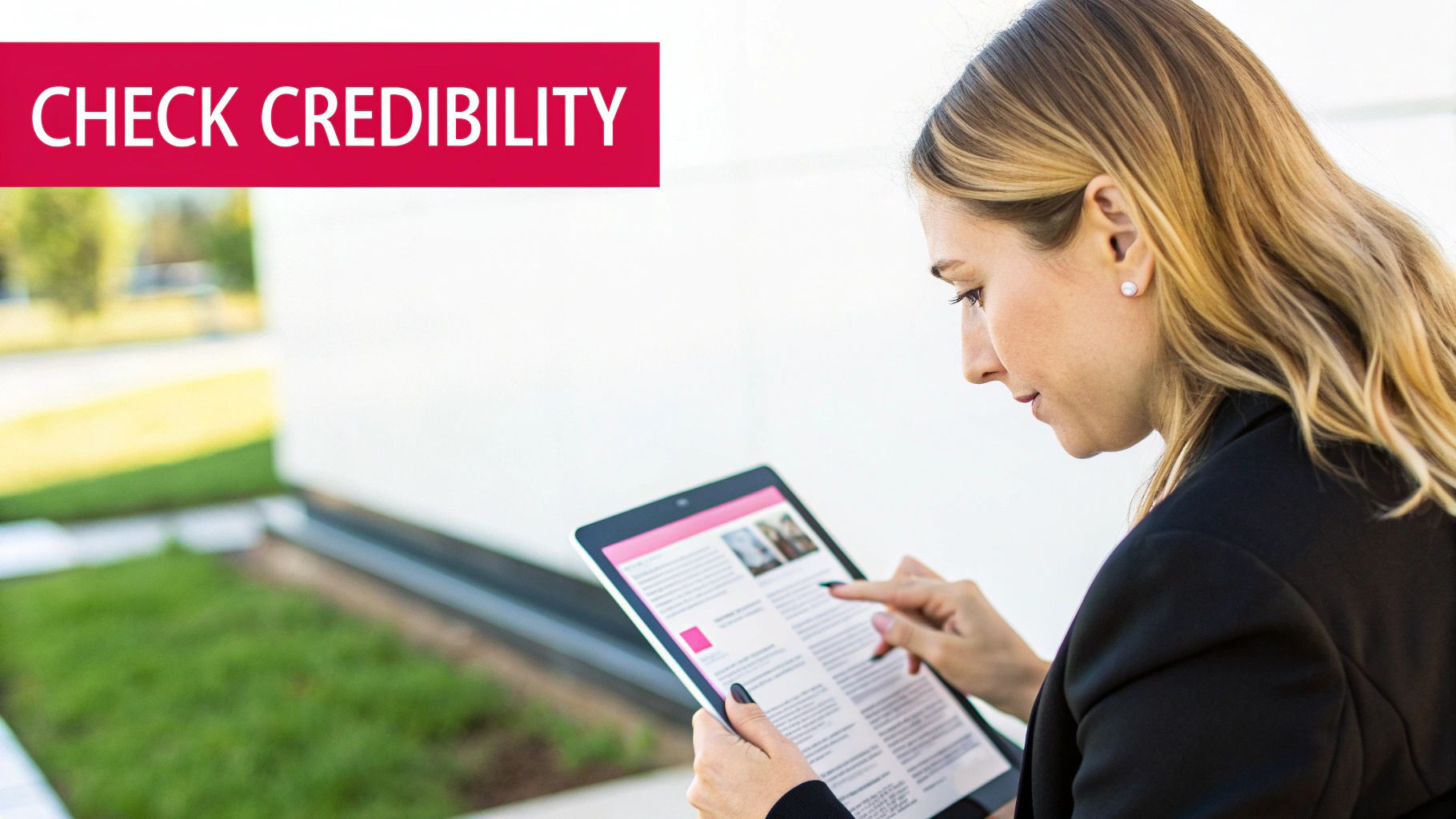
Okay, you've found a creator with content that looks promising. That's a good start, but it's only the first step. The real work begins now—digging deep to make sure they’re a safe and effective partner for your brand.
Trust me, skipping this vetting stage is a gamble. It can backfire spectacularly, damaging your reputation and torching your budget.
An influencer with a huge follower count might seem like a sure thing, but those vanity metrics can be seriously misleading. A quick but thorough audit is the only way to confirm you’re partnering with someone who has built a genuine, engaged community and actually aligns with your brand’s values.
Look Beyond the Follower Count
First thing's first: analyze their audience quality and engagement. A massive follower count is worthless if the audience is full of bots or just completely disengaged. You're looking for signs of a real, breathing community.
Take a hard look at the comments on their posts. Are they genuine conversations, or is it just a wall of fire emojis and "Great post!" replies? Real engagement involves questions, followers sharing their own experiences, and actual back-and-forth dialogue.
Pro Tip: For a micro-influencer (10k-100k followers), a healthy engagement rate usually falls between 2.5% and 5%. If it's drastically lower, their audience might be passive. If it's way higher, you might be looking at fraudulent activity.
Audit Their Content History and Professionalism
Once you feel good about their audience, it’s time to play detective with their past content. You need to scroll back—and I mean really scroll back. Go back months, even a year or more, to get the full picture of who you're about to partner with.
You're checking for consistency in their tone and the quality of their work. More importantly, you're hunting for any red flags that could cause a brand safety nightmare down the road.
Here’s a quick checklist I use for my own audits:
- Past Controversies: Have they posted anything insensitive, offensive, or just plain weird in the past? A quick Google search of their username plus words like "controversy" or "drama" can be very revealing.
- Previous Partnerships: How did they handle collaborations with other brands? Look at their old sponsored posts. Did they put in real effort, or was it a lazy, low-quality shoutout?
- FTC Compliance: This one is a big deal. Do they properly disclose sponsored content with clear tags like
#ador#sponsored? Ignoring this isn't just unprofessional—it can land your brand in hot water. To get up to speed, you should read the official FTC guidelines for influencers and make sure your campaigns are always compliant.
Think of thorough vetting as your brand's insurance policy. It’s the process that ensures the influencer you choose has not just the reach you want, but also the integrity to represent your company well. It turns a potential risk into a rewarding and successful partnership.
You’ve done the hard work, vetted your list, and now you have a handful of creators who feel like a perfect fit. Now comes the moment of truth: reaching out.
It’s easy to forget that top-tier influencers get dozens, if not hundreds, of partnership requests every single week. A generic, copy-paste message is a guaranteed one-way ticket to their trash folder. Your outreach has to cut through all that noise.
Think of your first message less like a cold pitch and more like the start of a genuine conversation. This is your chance to prove you’ve done your homework and aren’t just blasting a template to a giant list.
Nail Your Opening Line
Your first sentence is everything. It has to immediately signal that this isn’t just another mass email landing in their inbox.
Generic openers like "I love your content!" are lazy and, frankly, they don’t work. You have to get specific. Reference a particular video, post, or story and explain why you enjoyed it. Instead of a vague compliment, try something more like this:
"Your recent video on cold brew methods was fantastic—I never thought to use oat milk ice cubes, and it was a total game-changer."
This simple detail proves you're a real follower, not just a marketer with a spreadsheet. This small bit of effort shows you respect their work, and it instantly makes them more receptive to what you have to say next.
The goal of your outreach isn't just to pitch a collaboration; it's to start a relationship. A personalized, respectful approach lays the groundwork for a partnership built on mutual trust and excitement.
Be Clear, Direct, and Upfront
Once you have their attention, don’t make them guess what you want. Influencers are busy professionals running a business, and they appreciate clarity.
Briefly introduce your brand, then get straight to the point. Clearly state what you're proposing—is it a gifted product, an affiliate partnership, or a paid collaboration? Don't beat around the bush.
Your initial message should provide all the essential details without being overwhelming. Think of it as a mini-brief that respects their time. This is a key step when learning how to find influencers for your brand and actually build a lasting connection.
To make sure your message hits all the right notes, let's break down the key pieces.
Key Elements of a Winning Outreach Email
A solid outreach email has a few core components that work together. This table breaks down what you need to include to make a great first impression and get the conversation started on the right foot.
| Email Section | Purpose | Example Snippet |
|---|---|---|
| Personalized Opener | To show genuine interest and that you've done your research. | "Hi [Name], I loved your recent post about sustainable travel—your tips for packing light were brilliant." |
| Clear Introduction | To quickly explain who you are and why you're contacting them. | "I'm the founder of [Brand Name], a company that makes eco-friendly travel gear." |
| The Ask | To state exactly what kind of collaboration you're proposing. | "We'd love to send you our new backpack to feature in an upcoming trip." |
| Value Proposition | To explain what's in it for them (compensation, product, etc.). | "This would be a paid partnership, and we're also happy for you to keep the product." |
| Simple Call-to-Action | To make it easy for them to respond and move forward. | "If this sounds interesting, let me know, and I can send over more details." |
Putting these elements together creates a message that is personal, professional, and easy to act on. It shows you value their time and their work, which is the best way to kick off a potential partnership.
Still Have Questions? Let's Clear a Few Things Up
Even with the best strategy, a few practical questions always pop up when you're just getting started with influencer discovery. It's totally normal. Things like costs, measuring success, and finding creators in super-specific fields are common hurdles.
Let's tackle some of the most frequent uncertainties that come up when you're learning how to find influencers for your brand.
How Much Does It Cost to Hire an Influencer?
Honestly? There's no simple price tag. The cost of an influencer collaboration is all over the map and depends heavily on their follower count, typical engagement rate, industry, and the scope of work you're asking for.
For instance, a nano-influencer with a few thousand die-hard fans might be ecstatic just to get some free product. But once you get into the micro-influencer space, they often charge anywhere from $100 to over $1,000 per post.
Move up to the macro and mega-influencer tiers, and you're looking at fees that can jump from several thousand dollars to well into the six figures for a single campaign.
The best way to approach this is with a flexible budget. Know what you're willing to spend, but be ready to negotiate. It all comes down to the creator's specific rates and the value they can bring to your brand.
What Metrics Should I Track to Measure Campaign Success?
The metrics you watch have to connect directly to the goals you set in the very beginning. Don't get caught up in tracking vanity metrics just for the sake of it. Focus on the data that shows you a real return on your investment.
Here’s a quick breakdown based on what you might be trying to achieve:
- Building Brand Awareness: Your main focus here should be on reach (how many unique people saw the content) and impressions (the total number of times the content was shown).
- Driving Engagement: This is all about the interactions—likes, comments, shares, and saves. When these numbers are high, you know the content really clicked with the audience.
- Boosting Conversions: This is where the rubber meets the road. Keep an eye on click-through rates from UTM-tagged links, how many people visit your landing page, and—most importantly—sales. Handing out unique discount codes to each influencer is one of the best ways to see exactly who is driving revenue.
Should I Use Long-Term Partnerships or One-Off Campaigns?
A one-off campaign can definitely give you a quick win, especially for a specific product launch or promotion. But if you want to see truly superior results, long-term partnerships are almost always the way to go.
Why? Because authenticity is the real currency in influencer marketing, and that’s something that builds over time.
When an influencer features your brand repeatedly, their posts feel less like an ad and more like a genuine tip from a trusted friend. This kind of sustained relationship turns a creator into a true brand advocate, creating a much deeper connection with their audience. The result is higher engagement and a far stronger ROI in the long run.
How Do I Find Influencers in a Very Niche Industry?
Finding creators in a super-specialized field calls for a more surgical approach. Forget those broad, generic searches and start thinking like an industry insider.
Your first move should be to hunt down hyper-specific industry hashtags. From there, dive into relevant online communities on platforms like Reddit or LinkedIn where the real experts hang out.
You should also pay close attention to who's speaking at industry conferences or getting featured in trade publications. And don't forget to do some competitor analysis—it's a goldmine. See which smaller, specialized creators your direct competitors are teaming up with. Niche influencers might have smaller audiences, but those followers are often incredibly knowledgeable and loyal, making them exceptionally valuable for any targeted campaign.
Ready to find the perfect creators without the endless manual searching? JoinBrands connects you with a network of over 250,000 vetted influencers and UGC creators, making it simple to launch and manage campaigns at scale. Find your ideal brand partners today.
